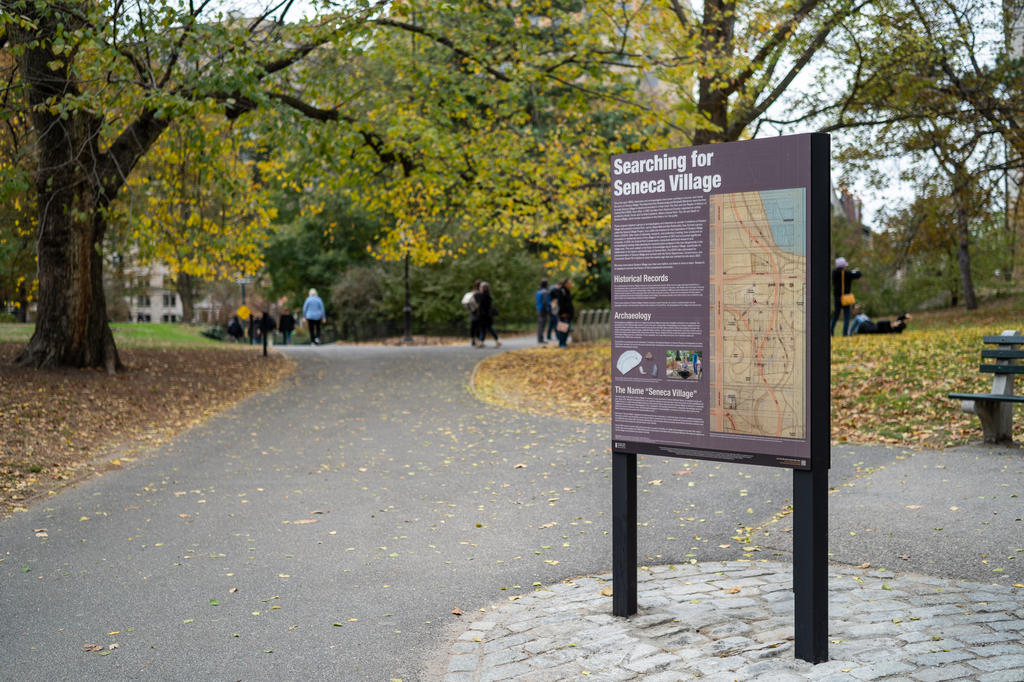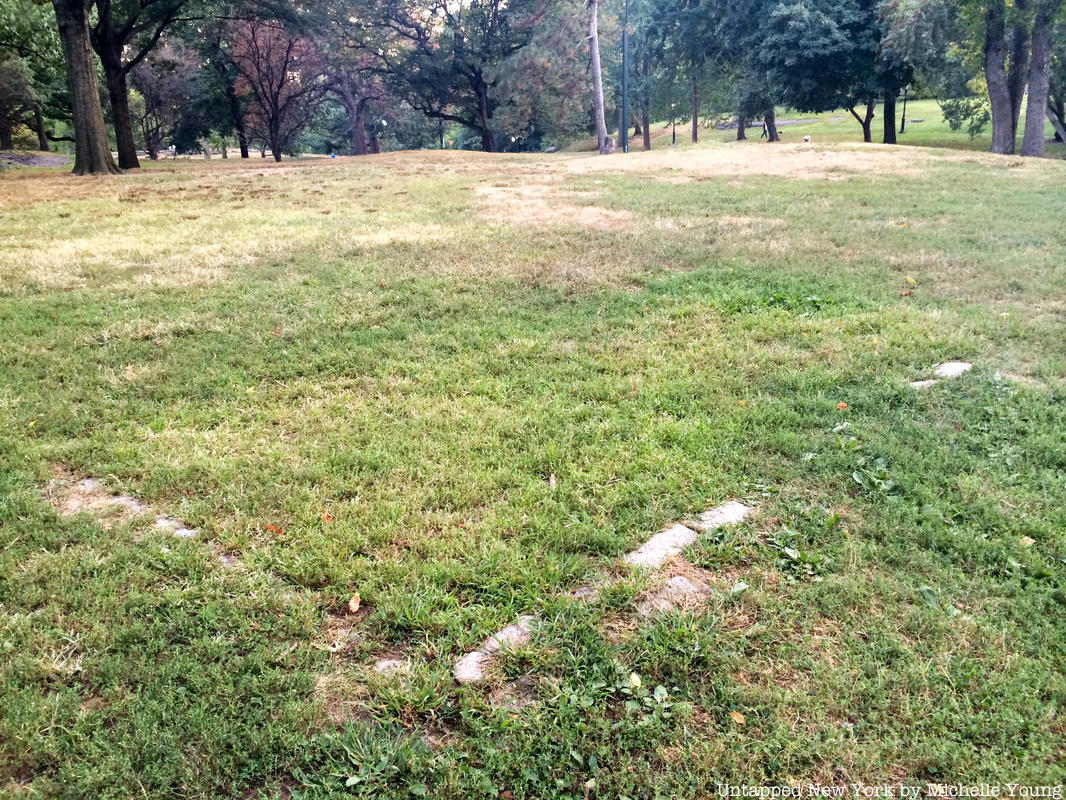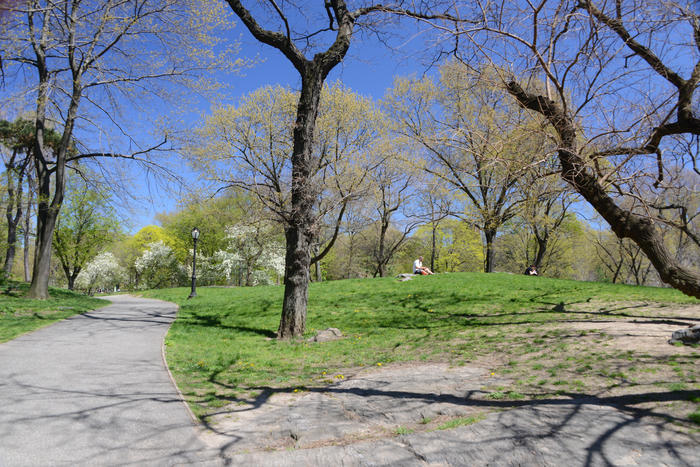In February, Central Park Conservancy hosted a month-long series of free tours on Seneca Village in honor of Black History Month. These tours, which were given also to our Untapped New York Insiders by Central Park Conservancy‘s Historian, Marie Warsh on two special Insiders-only visits, will continue throughout the year (at the regular price of $15). The tour included a look at the new interpretive signage that was installed last fall covering the history of Seneca Village, a settlement of African Americans and immigrants, that existed before the creation of Central Park. The signage, which is near the West 85th Street entrance, provides general information about the village and marks the locations of historic features such as the Village’s churches, individual houses, and natural features.
 Image courtesy of Central Park Conservancy
Image courtesy of Central Park Conservancy
One of the most surprising things we learned from Warsh was that the foundation bricks, commonly attributed to be a foundation from Seneca Village, is in fact, a 1930s sandbox! Even the New York Times has a piece about the foundation and its connection to Seneca Village.
Warsh tells us:
When Central Park was created, a lot of soil was brought in to level out uneven surfaces, so it seemed odd that any building foundations from Seneca Village would be exposed. In addition, the stones resemble granite blocks used in other parts of the park and seemed like they were more regularly cut than a foundation from that time might be. After doing a little research, I found a sandbox located in that exact spot and configuration on an old park map. It appears that it was a standalone sandbox for kids, which was commonly found in the Park before there were playgrounds.
 The granite block foundation long erroneously said to be from Seneca Village
The granite block foundation long erroneously said to be from Seneca Village
Seneca Village was home to 225 residents, and although they were predominantly African American, one third were Irish immigrants, and a handful were Germans. To give you a sense of a scale of the village, there were fifty homes, three churches and a school. The existence of such a village in New York, with the possibility of home ownership for African Americans meant that the property owners also had the right to vote.
 Summit Rock, the highest point in Central Park and an original feature in the Seneca Village landscape. Image courtesy of Central Park Conservancy.
Summit Rock, the highest point in Central Park and an original feature in the Seneca Village landscape. Image courtesy of Central Park Conservancy.
Though the existence of Seneca Village, and its demise due to eminent domain in the building of Central Park, was known, it was not until 2011 that an excavation was undertaken. Performed by the Institute for the Exploration of Seneca Village, it is part of a wider effort since the 1990s to add more knowledge about Seneca Village. Warsh says, “When the archaeologists conducted the excavations, they did find a building foundation in that area but underground and with different more rough types of stone.” So, archeological evidence of Seneca Village exists, but not in the form of the granite blocks.
You can find out more about Seneca Village on the Central Park Conservancy’s page dedicated to the site and book tickets to an upcoming Central Park Conservancy tour of Seneca Village here.
Next, check out the Top 10 Secrets of Central Park.





